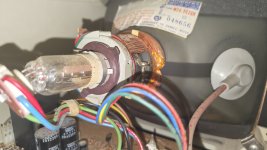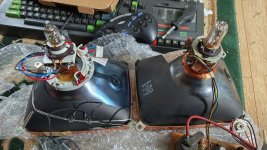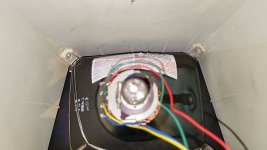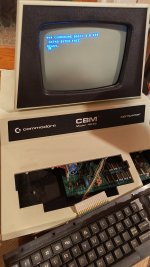Hi everyone, new here! I have been into retro/vintage computers ever since they weren't retro/vintage  I have quite a lot of the usual Commodores - 64s, Vic-20s, various peripherals, but one I didn't have was a PET. So one came up on eBay for reasonable money, and didn't require ANY work, and so I bought it. It was a long way away (Scotland) so the seller posted it.
I have quite a lot of the usual Commodores - 64s, Vic-20s, various peripherals, but one I didn't have was a PET. So one came up on eBay for reasonable money, and didn't require ANY work, and so I bought it. It was a long way away (Scotland) so the seller posted it.
Imagine my disappointment when it arrived broken. It had not been packed well, and the screen took a knock - probably due to being dropped by the courier - which resulted in the very end of the tube neck being broken. When turned on there is a little lighning display at the back of the monitor.
So I'm looking for a replacement tube. The one in the PET is an 9" Amperex (Philips) M24-302 GH. I have been offered a M24-306W/P, which I think is mostly the same, but would be white phosphor rather than green. Can anyone tell me if this is a drop-in (excuse the unfortunate imagery) replacement?
Imagine my disappointment when it arrived broken. It had not been packed well, and the screen took a knock - probably due to being dropped by the courier - which resulted in the very end of the tube neck being broken. When turned on there is a little lighning display at the back of the monitor.
So I'm looking for a replacement tube. The one in the PET is an 9" Amperex (Philips) M24-302 GH. I have been offered a M24-306W/P, which I think is mostly the same, but would be white phosphor rather than green. Can anyone tell me if this is a drop-in (excuse the unfortunate imagery) replacement?





